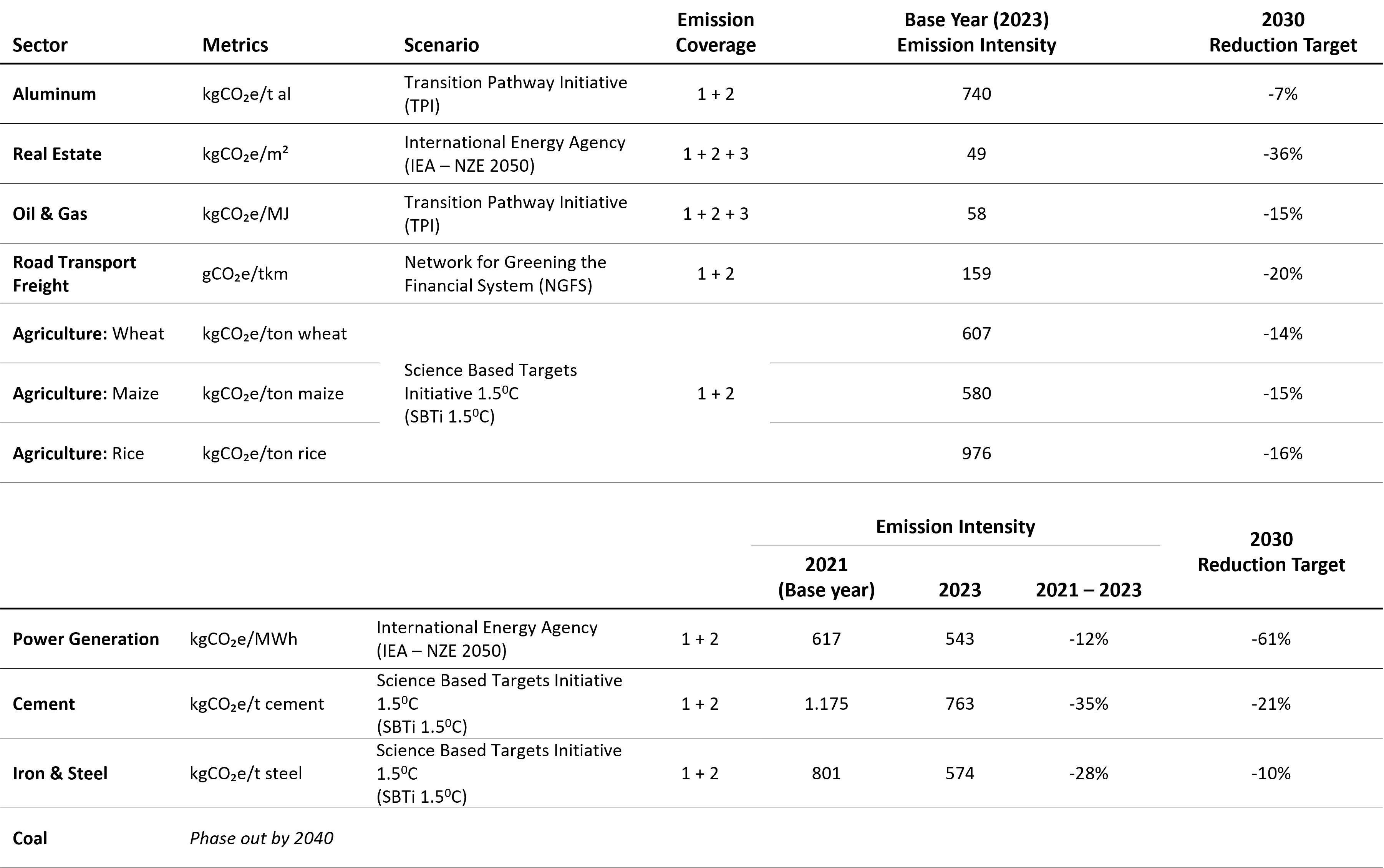In 2020, the Bank took a groundbreaking step by announcing it would not finance new thermal power plant investments for generating electricity using coal and natural gas. In the following year, the Bank extended this policy, by stating it would not finance coal mining investments. By 2023, İşbank also announced interim emission reduction targets for iron and steel, cement and power generation sectors, alongside a commitment to gradually phasing out of coal related activities by 2040.
In 2024, following the announcement of its emission reduction targets for iron and steel, cement and power generation sectors in 2023; the Bank has now finalized its efforts by covering all carbon-intensive sectors defined by the Net Zero Banking Alliance. As in previous year, the calculations of the financed emission intensities in these sectors were conducted in line with the methodology of Partnership for Carbon Accounting Financials (PCAF). For all carbon intensive sectors, science-based roadmaps aligned with local and international standards were developed, ensuring that the actions required for decarbonization were tailored to meet the specific needs of clients Accordingly, new targets aim to reduce emission intensities by 7% in aluminum, 36% in real estate, 20% in road freight transport and 15% in oil and gas by 2030 compared to base year 2023.
Recognizing agriculture's critical role in ensuring food security and driving sustainable development, İşbank has taken a pioneering step by establishing sector-specific emission reduction targets for the sector. İşbank set its emission reduction targets for its agricultural portfolio by studying the agricultural production in the arable lands of Türkiye and the specific characteristics of its clients. Recognizing the varying environmental impacts of different crops, the Bank aims to reduce emission intensity by 14% in wheat production, 15% in maize production, and 16% in rice production. By developing three distinct roadmaps with product-specific targets, tailored to the realities of agricultural banking and the famers’ needs, İşbank is setting a new standard and reaffirming its commitment to sustainable agricultural practices.
These targets represent a fundamental element of the Bank's sustainability strategy and reflect its goal of being a leading partner with innovative solutions for a sustainable future in the green transformation of its customers.
